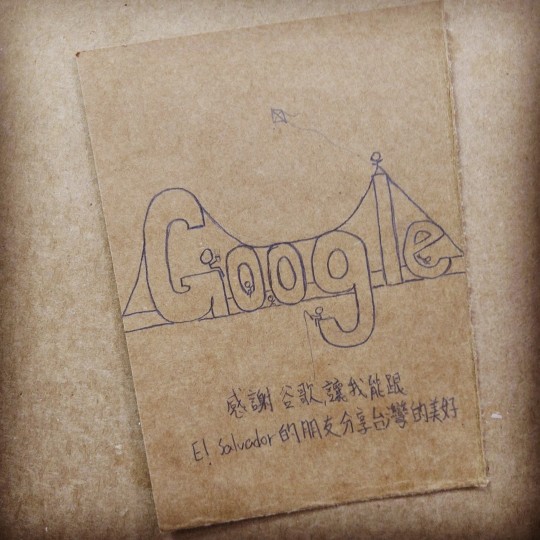#LanguageBridge
Explore tagged Tumblr posts
Text

🌍 Bridging Worlds with Words: Happy International Translation Day 2024! 📲
Today, we celebrate the art and science of translation that connects us across languages and cultures. International Translation Day is a tribute to the linguistic diversity and intercultural dialogue that enrich our global community. Let's honor the translators and interpreters who make understanding possible, bringing us all closer one word at a time.
#InternationalTranslationDay2024#CapivisCelebrates#LanguageLovers#TranslationMatters#WordsConnect#CulturalDiversity#GlobalUnderstanding#TranslatorsOnDuty#CapivisGroupGlobal#LanguageBridge#MultilingualWorld#TranslatorsRock#InterpreterLife#CelebratingLanguages#WorldwideWords
1 note
·
View note
Text
The Unveiling Importance of Certified Document Translation Services

Introduction:
In our interconnected world, the need for certified document translation services has become increasingly vital. Whether it's for legal, business, or personal purposes, the accuracy and reliability of translated documents are paramount. In this article, we delve into the significance of certified document translation services, exploring their role in ensuring precision, meeting legal requirements, and facilitating effective communication across linguistic boundaries.
I. Precision and Accuracy in Certified Document Translation:
Legal and Official Documents:
Certified document translation services play a crucial role in translating legal and official documents. Accuracy is paramount in these cases, as even a minor error could lead to misunderstandings, legal complications, or administrative hurdles. Professionals in certified translation meticulously ensure that the translated document mirrors the source text with utmost precision.
Technical and Specialized Content:
Some documents require expertise in specific fields, such as medical, technical, or scientific. Certified translators with knowledge in these domains ensure that the specialized terminology is accurately translated, maintaining the integrity of the information.
II. Legal Recognition and Compliance:
Certification for Legal Documents:
Legal systems often require translated documents to be certified for validity. Certified document translation services provide a declaration of accuracy, attesting that the translation is a true and faithful representation of the original text. This certification lends legal recognition to the translated document.
Compliance with Regulations:
Various industries and government bodies have specific regulations regarding the translation of certain documents. Certified translation services are well-versed in these regulations, ensuring that the translated documents meet all legal requirements and standards.
III. The Process of Certified Document Translation:
Selection of Qualified Translators:
Certified document translation services employ qualified and experienced translators who have expertise in the subject matter of the documents. These professionals are often certified by recognized translation associations, instilling confidence in the quality of their work.
Quality Assurance Measures:
Rigorous quality assurance measures are implemented throughout the translation process. This includes proofreading, editing, and verification to guarantee the accuracy of the translation. The goal is to deliver a document that not only meets linguistic standards but also adheres to the specific requirements of the client.
IV. Types of Documents Requiring Certified Translation:
Legal Documents:
Legal documents such as contracts, court orders, and affidavits often require certified translation for official recognition. Accuracy in translating legal terminology is crucial to avoid any misinterpretation.
Academic Transcripts and Diplomas:
Students and professionals seeking opportunities abroad may need certified translations of their academic transcripts and diplomas. This ensures that educational qualifications are accurately represented in the target language.
Business Documents:
Companies engaged in international business transactions may require certified translations of contracts, agreements, and financial documents to ensure clarity and legal compliance.
V. Benefits of Certified Document Translation Services:
Global Acceptance:
Certified translations are widely accepted globally, providing assurance to authorities, institutions, and individuals that the translated document is accurate and reliable.
Avoidance of Legal Complications:
Incorrect translations in legal documents can lead to serious legal consequences. Certified translation services help in avoiding such complications by providing accurate and legally recognized translations.
Professionalism and Reliability:
Engaging certified document translation services reflects professionalism and reliability. It signifies a commitment to accuracy and adherence to the highest standards in the translation industry.
Conclusion:
Certified document translation services play a pivotal role in bridging linguistic gaps while ensuring the accuracy and legality of translated documents. Whether it's for legal, academic, or business purposes, the importance of certified translation cannot be overstated. By entrusting documents to certified translators, individuals and businesses can navigate the complexities of international communication with confidence, knowing that their messages are accurately and professionally conveyed across language barriers.
#CertifiedTranslation#TranslationServices#LanguageExperts#DocumentPrecision#DocumentTranslation#EnglishToSpanish#LanguageBridge#CulturalAccuracy#LinguisticExcellence#TranslateWithPrecision#BilingualCommunication
1 note
·
View note
Photo

Unlocking Excellence: The Qualities of a Good Interpreter Interpreters play a crucial role in facilitating communication across languages and cultures. They help break down language barriers and promote understanding in various contexts. Let's explore the essential qualities that make a good interpreter and highlight their value in effective communication. 1. Language Proficiency: Good interpreters have a strong command of multiple languages. They understand both the source and target languages exceptionally well, allowing them to accurately convey messages and capture nuances. 2. Cultural Awareness: Interpreters possess cultural sensitivity, understanding the customs and norms of different cultures. This helps them navigate cross-cultural communication effectively and avoid misunderstandings. 3. Active Listening: Active listening is a key skill for interpreters. They attentively listen to speakers, capturing not only the words but also the emotions and context behind the message. 4. Quick Thinking: Interpreters need to think quickly and process information rapidly. Their ability to analyze and render information in real-time ensures smooth and accurate interpretation. 5. Impartiality: Good interpreters remain neutral and unbiased, focusing on faithfully conveying the message without injecting personal opinions or biases. 6. Professionalism: Interpreters uphold high standards of professionalism, respecting confidentiality, accuracy, and integrity in their work. 7. Adaptability: Interpreters demonstrate flexibility and adaptability, adjusting to different subject matters, environments, and unexpected situations. Good interpreters possess language proficiency, cultural awareness, active listening skills, quick thinking, impartiality, professionalism, and adaptability. Their expertise fosters effective communication, bridging language and cultural gaps. Next time you encounter an interpreter, appreciate the valuable role they play in facilitating understanding and collaboration.
0 notes
Text

7 Remarkable Women Who Invested in Language Teaching & Learning to Accelerate Progress 💬🚀
#InternationalWomensDay #InvestInWomen"
On International Women's Day 2024, we celebrate the invaluable contributions of women from diverse backgrounds who have invested in language teaching and learning to accelerate progress.
These remarkable women have revolutionized language education, fostered cross-cultural understanding, and empowered communities worldwide. Let's delve into their inspiring stories in no particular special order of preference:
1. Suzanne Languellier (France) - Revolutionizing Language Education
Suzanne Languellier pioneered the Direct Method, emphasizing immersive language learning through conversation and interaction.
Her innovative approach transformed language education, laying the foundation for modern methodologies.
By investing in language teaching, Suzanne accelerated progress in communication and cultural exchange.
#LanguageRevolution
#InnovativeEducation 🌐
2. Sister María Jesús de Ágreda (Spain) - Bridging Cultures Through Language
Sister María Jesús de Ágreda played a crucial role in cultural exchange between Spanish missionaries and Native American tribes.
Through her linguistic abilities and cultural diplomacy, she facilitated communication and understanding, accelerating progress in early interactions between diverse communities.
Her legacy reminds us of the power of language to bridge divides. #CulturalDiplomacy #LanguageBridge 🤝
3. Yoko Hasegawa (Japan) - Promoting Cross-Cultural Communication
Yoko Hasegawa dedicated her life to making Japanese language learning accessible for non-native speakers.
By developing innovative teaching materials and methodologies, she promoted cross-cultural communication and understanding, accelerating progress in global language education.
Yoko's efforts continue to enrich international dialogue and collaboration.
#CrossCulturalExchange #LanguageAccessibility 🌍
4. Wangari Maathai (Kenya) - Empowering Communities Through Education
Wangari Maathai, renowned for her environmental activism, also championed education in Kenya.
Through the Green Belt Movement, she emphasized the importance of education in local languages, empowering communities, and accelerating progress toward sustainability and development.
Wangari's legacy inspires us to invest in education for a brighter future.
#EducationForAll #SustainableDevelopment 🌱
5. Miriam Makeba (South Africa) - Celebrating Linguistic Diversity Through Music
Miriam Makeba, known as Mama Africa, celebrated African languages and cultures through her music. By singing in multiple African languages, she promoted linguistic diversity and cultural pride, accelerating progress in the representation of African languages on the global stage.
Miriam's melodies continue to inspire unity and celebration. #LinguisticDiversity #CulturalPride ��
6. Aminata Sow Fall (Senegal) - Advocating for Mother Tongue Education
Aminata Sow Fall has been a staunch advocate for mother tongue education in Senegal.
Through her writings and activism, she highlights the importance of preserving indigenous languages and cultures, accelerating progress towards inclusive education and cultural preservation.
Aminata's voice resonates in the fight for linguistic equality. #MotherTongueEducation #CulturalHeritage 📚
7. Mama Gbagbo (Côte d'Ivoire) - Promoting Multilingualism for National Unity
Mama Gbagbo, as an Ivorian politician and educator, emphasized the importance of multilingualism for national unity. By promoting indigenous languages in education, she accelerated progress towards social cohesion and inclusivity.
Mama Gbagbo's advocacy continues to inspire efforts for linguistic recognition and unity.
#Multilingualism #UnityInDiversity 🇨🇮
These remarkable women exemplify the power of investing in language teaching and learning to accelerate progress.
On International Women's Day 2024, let's celebrate their legacies and commit to empowering women worldwide through education and linguistic diversity.
Together, we can build a more inclusive and prosperous future for all.
#TeamÉLF
#elfdafrique
#WomenEmpowerment
#LanguageForProgress
💪🌟
0 notes
Text
Breaking Language Barriers: CertifiedTranslationServicesUSA.com 🌍
Description: At CertifiedTranslationServicesUSA.com, we're your trusted partners in crossing linguistic boundaries. Discover why certified translations are vital for legal documents, contracts, and more. 📜🔍
Link: CertifiedTranslationServicesUSA.com
Image: [Insert an image related to language translation or legal documents]
Tags: #CertifiedTranslations #LegalDocuments #LanguageTranslation #ProfessionalTranslation #LanguageMatters #Communication #CertifiedTranslationServicesUSA #LanguageBridge
Feel free to customize this Tumblr post by adding an engaging image and relevant hashtags to attract more viewers and encourage engagement.
1 note
·
View note
Text
What separates people is not the language,but the inner fear of making mistakes.
來自不同地方,不同溫度的人。
哪怕一次,只要說出口,
或許風景依舊,
內心卻新添一抹芬芳。

#google#elsalvador#taiwan#languagebridge#translator#nodistance#lifeshare#stranger#varietypeople#funnypicture#funnypictures#谷歌#無國際#無距離���的感覺#薩爾瓦多#翻譯#陌生體驗#陌生人#互相祝福#最美的國家#台灣
0 notes
Video
youtube
"The Bridge," by Octavio Paz
0 notes
Text
Effortless English to Spanish Document Translation Services: Your Bridge to Global Communication

Unlock seamless cross-cultural communication with our professional English to Spanish document translation services. Whether it's legal, technical, or creative content, our expert linguists ensure accurate and culturally nuanced translations, maintaining the integrity of your message. Experience a swift and reliable translation process that transcends language barriers, allowing your documents to resonate effectively in the Spanish-speaking world.
#CertifiedTranslation#TranslationServices#LanguageExperts#DocumentPrecision#DocumentTranslation#EnglishToSpanish#LanguageBridge#CulturalAccuracy#LinguisticExcellence#BilingualCommunication#GlobalUnderstanding#SpanishTranslation#LanguageMatters#LanguageSkills#TranslateLikeAPro
0 notes
Text
Official Document Translation Services: Precision and Confidentiality Guaranteed
Entrust your official documents to our expert translators for meticulous and confidential translations. We specialize in accurately translating legal, governmental, and administrative documents. Our team ensures precision, maintains document integrity, and upholds confidentiality. Count on us for reliable, professional, and secure official document translation services.

#CertifiedTranslation#TranslationServices#LanguageExperts#DocumentPrecision#DocumentTranslation#EnglishToSpanish#LanguageBridge#CulturalAccuracy#LinguisticExcellence#TranslateWithPrecision
0 notes
Text
Bridging Cultures: The Art and Importance of Translating Documents from English to Spanish

Introduction:
In an increasingly interconnected world, the ability to transcend language barriers is paramount. One of the most common challenges faced by individuals and businesses alike is the need to translate documents from English to Spanish. This process is not merely a mechanical task but an art that involves cultural sensitivity, linguistic nuance, and a deep understanding of the target audience. In this blog post, we will explore the intricacies of translating documents from English to Spanish and shed light on the significance of accurate and culturally relevant translations.
I. The Importance of English to Spanish Translation:
Global Reach and Market Expansion:
English may be a global language, but a significant portion of the world's population communicates primarily in Spanish. By translating documents into Spanish, businesses can tap into a vast and diverse market, opening doors to new opportunities and expanding their global reach.
Cultural Sensitivity:
Translation is not just about converting words from one language to another; it involves understanding and respecting cultural nuances. Spanish speakers have distinct cultural preferences, and a well-translated document takes these into account, ensuring that the message resonates with the target audience.
II. Challenges in English to Spanish Translation:
Idiomatic Expressions:
Languages often contain idiomatic expressions that may not have direct equivalents in another language. Translators face the challenge of preserving the meaning and essence of these expressions while ensuring they make sense in the target language.
Grammatical Differences:
English and Spanish have different grammatical structures. Translators must navigate these differences to produce coherent and grammatically correct translations. This includes understanding verb conjugations, noun-adjective agreements, and sentence structures unique to each language.
III. The Role of Technology in Translation:
Machine Translation vs. Human Translation:
While machine translation tools have advanced significantly, they still struggle with context, idiomatic expressions, and cultural nuances. Human translators bring the necessary cultural understanding and context to deliver accurate and meaningful translations.
Translation Tools as Aids:
Translation tools can be valuable aids for human translators. They speed up the process and help maintain consistency. However, they are most effective when used in conjunction with human expertise to ensure the highest quality output.
IV. Best Practices in English to Spanish Translation:
Understand the Target Audience:
A successful translation requires a deep understanding of the target audience. Knowing their cultural preferences, language variations, and communication styles is crucial for crafting a message that resonates.
Maintain Consistency:
Consistency in terminology and style is vital for a polished translation. Establishing a glossary and style guide can help maintain uniformity across various documents.
Seek Professional Assistance:
When precision and cultural relevance are paramount, seeking the expertise of professional translators is a wise investment. They bring linguistic proficiency, cultural awareness, and a commitment to delivering high-quality translations.
Conclusion:
Translating documents from English to Spanish is not a simple act of substituting words; it's a delicate process that involves preserving meaning, context, and cultural nuances. In our globalized world, effective communication across languages is essential for businesses, organizations, and individuals. By recognizing the importance of accurate and culturally relevant translations, we can build bridges between languages and cultures, fostering understanding and collaboration on a global scale.
#CertifiedTranslation#TranslationServices#LanguageExperts#DocumentPrecision#DocumentTranslation#EnglishToSpanish#LanguageBridge#CulturalAccuracy#LinguisticExcellence#TranslateWithPrecision#BilingualCommunication#GlobalUnderstanding#SpanishTranslation#CrossCulturalCommunication#LanguageMatters#EffectiveTranslation
0 notes
Text
Transform Words into Bridges: Explore Our Premier Translation Services! 🌐✨
Embark on a linguistic journey with our expert translation services! 🚀 Whether it's business documents, creative content, or personal communication, we've got you covered. Break down language barriers and expand your reach globally. Connect with us today to experience flawless translations that speak the language of success! 💼🌍

#CertifiedTranslation#TranslationServices#LanguageExperts#DocumentPrecision#DocumentTranslation#EnglishToSpanish#LanguageBridge#CulturalAccuracy#LinguisticExcellence#TranslateWithPrecision#BilingualCommunication#GlobalUnderstanding#SpanishTranslation#LanguageMatters#GlobalReach
0 notes
Text
Streamlined Documents Translation Services for Precision and Efficiency
Unlock seamless communication with our Documents Translation Services. Our expert linguists ensure precision and efficiency in translating legal, business, and personal documents. Experience clarity and accuracy in every language, tailored to your specific needs.
#CertifiedTranslation#TranslationServices#LanguageExperts#DocumentPrecision#DocumentTranslation#EnglishToSpanish#LanguageBridge#CulturalAccuracy#TranslateWithPrecision#BilingualCommunication#SpanishTranslation#LanguageMatters#EffectiveTranslation#ProfessionalTranslation#CulturalSensitivity#MultilingualCommunication
0 notes
Text
Efficient Document Translating Services: Bridging Language Gaps with Precision
Unlock the power of seamless communication with our Efficient Document Translating Services. From legal documents to technical papers, our dedicated team ensures precise translations that preserve the intended meaning. Trust us to break down language barriers and deliver clear, culturally nuanced content tailored to your specific requirements. Choose excellence in document translation for a global impact.
#TranslationServices#LanguageExperts#DocumentPrecision#DocumentTranslation#EnglishToSpanish#LanguageBridge#CulturalAccuracy#LinguisticExcellence#TranslateWithPrecision#BilingualCommunication#GlobalUnderstanding#SpanishTranslation#CrossCulturalCommunication#LanguageMatters#EffectiveTranslation#LanguageSkills#ProfessionalTranslation#CulturalSensitivity#MultilingualCommunication
0 notes
Text
Accurate Certified Translation Services for Your Documents
Explore our reliable certified translation services for precise and officially recognized document translations. Our team of certified linguists ensures accuracy and authenticity, meeting the highest standards for legal, academic, and professional purposes. Trust us to deliver quality translations tailored to your specific needs.
#CertifiedTranslation#TranslationServices#LanguageExperts#DocumentPrecision#DocumentTranslation#EnglishToSpanish#LanguageBridge#CulturalAccuracy#LinguisticExcellence#TranslateWithPrecision#BilingualCommunication#GlobalUnderstanding#SpanishTranslation#CrossCulturalCommunication#LanguageMatters#EffectiveTranslation#LanguageSkills#ProfessionalTranslation#CulturalSensitivity#MultilingualCommunication#TranslateLikeAPro#CommunicationWithoutBarriers#TranslateAndConnect
0 notes
Text
Accurate and Reliable Certified Translation Services
Ensure precision and trust with our certified translation services. Our expert linguists guarantee meticulous and authenticated translations for legal, business, and personal documents, bridging language gaps with confidence and professionalism.
#DocumentTranslation#EnglishToSpanish#LanguageBridge#TranslationServices#CulturalAccuracy#LinguisticExcellence#TranslateWithPrecision#BilingualCommunication#GlobalUnderstanding#SpanishTranslation#CrossCulturalCommunication#LanguageMatters#EffectiveTranslation#LanguageSkills#ProfessionalTranslation#CulturalSensitivity#MultilingualCommunication#TranslateLikeAPro#LanguageExperts#CommunicationWithoutBarriers#TranslateAndConnect
0 notes
Text
The Art and Importance of Translating Documents from English to Spanish

Introduction
In our interconnected world, effective communication across borders is crucial for success in various fields. One of the key elements of global communication is the accurate translation of documents. English and Spanish stand as two of the most widely spoken languages globally, making the translation between them particularly significant. This article explores the art and importance of translating documents from English to Spanish, shedding light on the complexities, benefits, and the role it plays in fostering international understanding.
The Significance of English to Spanish Translation
Global Reach and Business Expansion: English is the lingua franca of international business, but Spanish holds its own as one of the most spoken languages worldwide. Translating documents from English to Spanish facilitates global business expansion by reaching a broader audience. It allows companies to tap into the vast market of Spanish-speaking consumers and establish a stronger international presence.
Cultural Sensitivity and Market Penetration: Effective translation goes beyond converting words; it involves understanding and adapting to cultural nuances. Translating documents into Spanish demonstrates a commitment to cultural sensitivity, helping businesses connect with their target audience on a deeper level. This cultural understanding is essential for successful market penetration and building trust with consumers.
Legal Compliance: In legal matters, precision is paramount. Translating legal documents accurately from English to Spanish ensures compliance with the legal systems in Spanish-speaking regions. It helps avoid misunderstandings, disputes, and legal complications, contributing to the smooth operation of cross-border activities.
The Complexities of English to Spanish Translation
Linguistic Differences: English and Spanish belong to different language families, and their structures, grammar, and vocabulary often differ. Translators must navigate these linguistic variations to convey the intended message accurately. Idiomatic expressions, wordplay, and cultural references pose additional challenges that require careful consideration during the translation process.
Maintaining Tone and Style: Translating documents involves more than converting words; it requires preserving the tone and style of the original text. Maintaining the author's voice ensures that the translated document resonates with the target audience and conveys the intended emotions and nuances.
Technology and Tools: Advancements in translation technology have streamlined the translation process, but they are not without challenges. While tools like machine translation can assist, they may lack the finesse and cultural understanding that human translators bring. Professional translators often use a combination of technology and their linguistic expertise to achieve the best results.
The Role of Professional Translators
Cultural Competence: Professional translators possess not only linguistic skills but also cultural competence. They understand the cultural context of both languages, allowing them to navigate cultural nuances and idioms effectively. This cultural insight is crucial for producing translations that resonate with the target audience.
Subject Matter Expertise: Different industries have their own jargon and terminology. Professional translators often specialize in specific fields, such as legal, medical, or technical translation. Their subject matter expertise ensures accurate and contextually appropriate translations, especially in specialized documents.
Quality Assurance: Professional translation services prioritize quality assurance. They employ rigorous proofreading and editing processes to ensure that the translated document is error-free and meets the highest standards of linguistic and cultural accuracy.
Conclusion
Translating documents from English to Spanish is a complex and multifaceted process that goes beyond linguistic conversion. It is an art that requires a deep understanding of both languages, as well as the cultural and contextual intricacies that shape effective communication. As businesses, individuals, and organizations strive for global reach and cultural sensitivity, the role of professional translators becomes increasingly vital. Through their expertise, they bridge linguistic gaps, foster international understanding, and contribute to the seamless exchange of ideas and information on a global scale.
#DocumentTranslation#EnglishToSpanish#LanguageBridge#TranslationServices#CulturalAccuracy#LinguisticExcellence#TranslateWithPrecision#BilingualCommunication#GlobalUnderstanding#SpanishTranslation#CrossCulturalCommunication#LanguageMatters#EffectiveTranslation#LanguageSkills#ProfessionalTranslation#CulturalSensitivity
0 notes